House Training Puppies or Older Rescue Dogs
How to Housebreak a Puppy or Older Dog
One of the most common themes in the many emails I get every day concerns problems people have with house training their dogs. Everyone learns differently, so we have many different forms of material in addition to this article that you can learn from to properly housetrain your dog: ebook, streaming video, DVD, and online course.
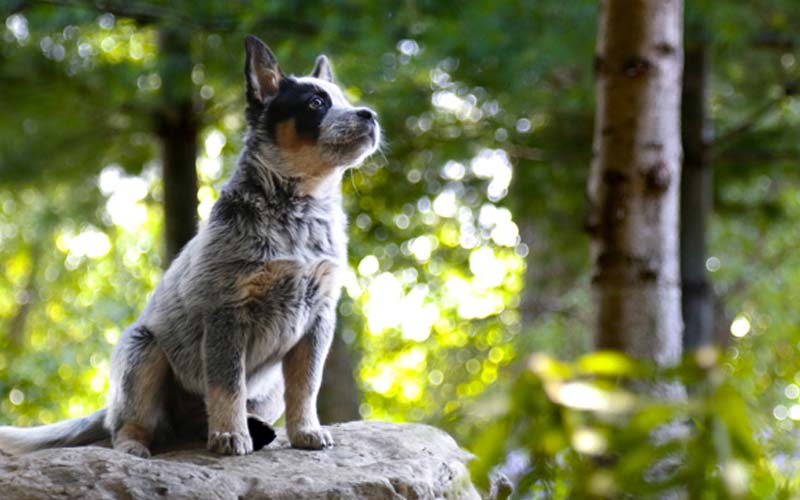
There's no such thing as an almost housebroken dog. Either he is or he isn't. Saying a dog is almost housebroken is like saying your wife is almost pregnant. When a dog is housebroken, he never uses the house for his toilet.
Many people do not understand why their dog does not know what to do when taken outside. Just turning a dog out in the backyard by himself a few times a day is not the way to house train a dog.
Merely taking him outside also does not mean he knows what he's being taken outside for. The biggest problem between the dog and the owner is that the dog would love to please, but he doesn't know how to communicate with you.
Housebreaking, in theory, is very simple. It is finding a means of preventing the puppy from doing his duties in the house and only giving him the opportunity to do it outside. It also means that the dog learns to communicate with you about going when told to go and about letting you know when he has to go outside.
A dog is a creature of habit, and because he learns by association, if his training is consistent, he will quickly learn there is no other place to relieve himself other than outdoors.
We take advantage of a very natural instinct of the dog: his desire to keep his sleeping quarters clean (i.e., not to mess his bed). We offer a dog a den in the form of a dog crate. This becomes his bed that he cannot get out of. If the dog crate is the right size, he will not soil it. Puppies may not initially like it (some will scream their heads off), but within a few days, they will accept it without a problem.
Dogs are and always have been den and pack animals. Canines naturally and instinctively prefer the shelter of a den. In the wild, the young are raised in dens. They spend a great part of their first year very close to their den. In homes, dogs often choose their den. They will get under a desk, behind a couch, in a closet, etc.
A dog crate is a perfect, natural bed for the dog and a safe, natural spot to put the pet whenever necessary for the dog's safety or the owner's peace of mind.
If you are appalled by the idea of confining him to a cage, let me dispel any idea of cruelty. You are actually catering to a very natural desire on the part of the dog. In his wild state, where does a dog bed down for the night? Does he lie down in the middle of an open field where other animals can pounce on him? No! He finds a cave or trunk of a tree where he has a feeling of security - a sense of protection. The correct use of a crate merely satisfies the dog's basic need to feel safe, protected, snug, and secure.
Now with this said, some puppies will scream their living heads off and others for a couple of days when you put them in the crate. The question you need to answer is, "Would I rather get the dog used to the crate or would I rather clean up dog crap on my rug"? An easy question to answer.
Pups do get over the fact that screaming gets them nowhere, as long as you ignore it and DO NOT TAKE THEM OUT OF THE CRATE WHEN THEY ARE SCREAMING. If it bothers you, put the crate in the basement or the garage or leave the house for a few hours. Trust me, it will stop when it gets tired. Those who give in create their own problems.

Small pups will naturally sleep 15 to 18 hours a day. This is normal. They quickly learn that the crate means taking a nap.
I keep a plastic bowl of all-natural dog treats near my crate. Every time I put a pup in the crate, I give a "CRATE" command and toss 3 or 4 treats into the crate. It gives the pup a nice reason to go in. You will be surprised how quickly they expect to get a treat when they go into the crate. Going in becomes a positive experience.
As a dog ages and learns, I will give the "CRATE" command before I toss the treats in. I will expect the dog to go in on their own because I just told them to do it. This exercise is the beginning of teaching your dog to go to his crate when people come to the house. Dogs that bark and act stupid when they hear the doorbell need to be told to go to their crate. This is how that training is started.
When thinking of the size of a crate needed for your dog, think small. Think den, not condo! The use of too large a crate for a puppy will encourage the pet to use a small portion of it for a bed and the remainder as a relief station!
The puppy should only be allowed to relieve itself outdoors. It is OK to place the crate in the bedroom of the person who will be responsible for that early morning trip. This is a temporary situation. I am not a fan of a dog sleeping in the bedroom. It often causes the adult dog to develop issues of dominance. Once the pup is old enough to sleep the night through without having to go outside, I recommend that the crate be moved into another room.
A crate is never meant to be used as a place of punishment for the puppy, so a couple of safe toys would be welcome for crate time. A Kong filled with peanut butter or cream cheese goes a long way towards keeping a puppy quiet in a crate. Be careful of the toys you choose to leave. Soft squeaky toys with bells are not healthy for pups. Often, pups chew up these soft toys and get parts of them stuck in their bowels, which often kills them.
Start crate training while you remain in the same room with the crated dog, frequently praising him and letting him know clearly it is pleasing to you that he remains in the crate, quietly. Frequent trips out of the room with quick returns with a treat through the bars will condition the dog to your comings and goings.
Gradually extend your absent periods, and in a short time, you can be gone for several hours. While in the crate, the dog should not be scolded except for chewing on the wires. You can make it clear that you are not pleased with screaming but often that does not impress the pup. So ignore it.
Crate confinement works so well that most dogs soon choose the crate for naps and, in general, consider it their own private domain. They learn that they can go into their crate and sleep and no one will step on them or jump on them. I feed all my house dogs in their crate. I NEVER feed outside the crate.
At night, take the puppy out and give him an opportunity to do his duties. If you are in a protected area (a fenced backyard) let him go, free of the leash. Be sure to stay out there with him. Lavishly praise him with GOOD OUTSIDE when he has completed his duties. Take him inside at once and put him in his bed.
A puppy is NEVER ALLOWED TO HAVE FREE ACCESS TO THE HOUSE unless you have your eyes on the pup. If he poops on the floor because you turned your back for 45 seconds, well, you screwed up and made a mistake. Don't blame the pup for your mistake.
The only time pups are loose in my home is just after they come in from going outside and then only for short periods of time. All of my interaction with my pups is done outside. I NEVER leave a dog unattended and loose in the house until it is 18 to 24 months old and then only for short periods.
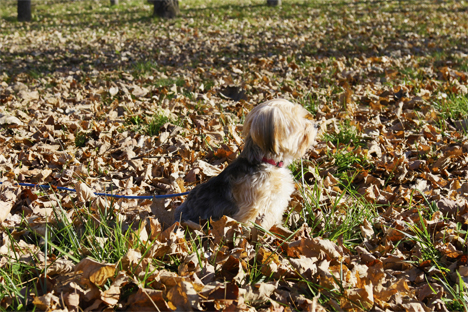
Pups must go out first thing in the morning. And I really mean first thing: take the dog outside. He's been clean all night and holding it all night. He will do his duty in a hurry because HE HAS TO GO. Now bring him in and give him freedom, but in the kitchen only. A child's gate at the kitchen doorway is an excellent barrier to the other rooms in the house. Give him his freedom while breakfast is being prepared and while you are eating breakfast. After your breakfast, feed him his breakfast and take him out immediately. Remember the rule: outside after each meal. Dogs relieve themselves after SLEEPING, EATING, and HAVING EXERCISE.
Now bring him in and put him in his crate and go about your normal routine of the morning. He should stay in the crate until about 11:00 to 11:30 A.M. Then out of the crate and outside. Bring him in, and while you are preparing and eating lunch, let him have the freedom of the kitchen but only when you have "eyes on the dog."
At dinner time, as soon as he has finished his last mouthful, take him outside. After he has completed his duties, bring him in and again, give him the freedom of the kitchen while you are preparing dinner and during the dinner hour. Give him another trip outside at about 8:00 P.M. and again just before your bedtime. Some pups need to be exercised more than others to get them to relieve themselves. Exercise always increases the urge to pee or poop.
The bottom line is you cannot take your dog outside too much. If you take him out every hour, then he learns that he is going to have a chance to go outside to do his business. So when someone tells you to wait for 4 hours, I would ask WHY if you can take him out more often? Why wait that long if you are home? We want to establish a pattern and what better way than to take the dog out all the time. Also do not underestimate how important it is to ask your pup if he WANTS TO GO OUTSIDE just before going out and praising "GOOD OUTSIDE" when he does go. I tell my adult dogs "GOOD OUTSIDE".
One last point on your dog's housebreaking: a commercial kibble diet takes 14 to 15 hours to go through the dog. An all-natural diet goes through the dog in 5 to 6 hours. I strongly recommend that you consider doing your research on all-natural diets. Read about them on my website and on my web discussion board.
A couple of points on how to house train your dog:
- Do not vary your dog's diet.
- Treats should be given as a reward for the puppy going into the crate.
- Bring him in as soon as he does his business.
- Praise every time you see him pee or poop. Do this forever. Reinforcing good behavior never hurt anything.
- Dogs who go out and just dink around and then go in their crate need more exercise when they go outside. A long walk will often cure the problem. BE SURE TO PRAISE WITH GOOD OUTSIDE or whatever you want. Also, make sure you say, "DO YOU WANT TO GO OUTSIDE" before heading out. He will learn what you mean.
- Older dogs are house-trained exactly like young pups.
Using An Odor Neutralizer and Indoor Spray Repellent
When a handler makes a mistake and allows the dog to pee in the house, you have to get rid of the odor. (Sometimes you need to get rid of the owner.) This is accomplished with an odor neutralizer, which is available in pet stores. (Do not use household cleaners as they contain ammonia and will attract him back to the same spot.) When used properly, it will completely eliminate these odors, discerned only by the dog, by neutralizing the scent. When areas previously used by the dog have been neutralized, the incentive for using the same spot will be eliminated. Then spray the area that has been soiled with an indoor pet spray repellent.
Proper Correction
Under no circumstances should the puppy be punished for relieving himself in the house unless you catch him in the act. The punishment should be a verbal scolding, not physical harm.
A puppy has no mental capacity to connect your wrath with whatever he did wrong, even a few minutes later. If you cannot get to the pup within 2 seconds of him doing his business, then you have screwed up. Pups simply cannot put two and two together to understand why you would be mad about his peeing on the rug. It is confusing to him and you only get a puzzled whimper. You must catch him in the act, otherwise, your scolding does no good.
The old adage of rubbing a dog's nose in it is stupid. We don't do this to our kids, and we should not do this to our dogs. Anyone who recommends this needs a lot more experience in dog training.
If you catch the puppy in the act of an accident, we recommend clapping your hands or picking him up to interrupt. Quickly get the pup outside to finish what he started. When he goes to the bathroom outside, make sure to give a lot of praise. We don't punish puppies for making mistakes. They don't understand the rules yet so it would be unfair to do anything other than interrupt and get them outside to their designated bathroom area.
Many people are mistakenly convinced that a dog messes in the house for spite or revenge, usually for having been left alone. This is incorrect. It is for reasons of anxiety, nervousness, or fear that he behaves this way...or simply that he is not properly housebroken. Very often, the owner comes home and finds the dog behaving in a fearful, shameful, or generally guilt-ridden manner. It is because of this that the owner is convinced the dog has messed in the house for spite. It's simply not true. The dog cringes when you come home because he associates your arrival with punishment. You have conditioned him by correcting him too severely when you came home in the past (and it only takes ONE TIME).
Some people question me about pups that are very young wanting to go out every couple of hours. This can happen when the pups are under 12 to 14 weeks. There are a couple of things to keep in mind:
- Are you picking the water up at 6:30PM?
- Are you giving the pup enough exercise to make it tired before it goes to bed?
- Are you putting the pup in the crate all the time and not just at bedtime? The pup needs to learn that it must go in the crate and calm down.
- If you are convinced the pup just wants to come out and play after a few hours, then ignore it. If there is a mess in the crate later on, then YOU MADE A MISTAKE, not the dog. If the pup makes too much noise, move the crate into the basement or garage with a radio or TV on.
Paper Training
Let me say a few words about "paper breaking" or should I say, against it. As I said before, a dog learns by association and if you allow him to do his duties in the house on paper, you are telling him in effect that it is all right to do it within the four walls of the house. You are making this association in his mind, so later when you expect him to do his duties outside, he may think you are a little crazy and you can't blame him. Any healthy pup 8 weeks of age or older, even in cold weather, can go outside. Of course, you don't leave him out long enough to get chilled. You take him out just long enough to do his duties. These potty pads that seem to be popular are just plain stupid. Anyone who uses these is creating his or her own problems. Get a dog crate and use it.
With all of this said, there is always the occasional pup who will pee and poop in the crate. No matter how often you take him outside. This usually happens because of the living conditions the dog had before you got it. If the litter was not kept clean, then the pup has learned to be a pig. All you can do is continue on. It's a pain to clean the crate and the dog. But eventually, they will catch on. Unfortunately, most of these dogs never get that chance because they seal their fate with their unclean actions. I recently had a friend who raised her own litter and the pups were kept impeccably clean. One male she kept took 6 months before he would stop peeing in the crate at night. She got up in the middle of the night for months before the problem went away. So the moral of the story is that you need to do EVERYTHING right and even then, things can go wrong. We are dealing with animals, and sometimes they defy our good sense.
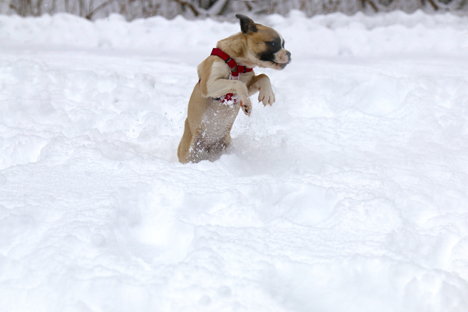
With a little effort on your part and the use of this method, the puppy can be housebroken very quickly. But remember, there is more than peeing and pooping in the house that goes along with housebreaking. Allowing a dog to be loose when you are gone is a little crazy unless you are 100% sure the dog will not chew your walls, your shoes, your furniture, or anything else it takes a liking to. SO KEEP YOUR DOGS IN DOG CRATES until they are 18 to 24 months old. I should post some of the stories I get through email of dogs eating couches. Couches and chairs seem to be a delicacy.
If you are at the housebreaking stage with a puppy, you need my video titled Your Puppy 8 Weeks to 8 Months. I give this tape to every person who buys a puppy from my kennel. I NEVER get questions on raising a puppy after sending my people this video. It's much better than any book published on the subject. I produced this video after breeding over 100 litters of German Shepherds and raising over 500 puppies. Very few people in this country have the experience I do with breeding or raising dogs.
Dog Crates
I recommend people use plastic airline crates to housetrain their dogs. These plastic crates are easy to clean and can be taken outside and sprayed out when need be. When we housetrain puppies, we keep our cleaning supplies right on top of the crate.
I used to recommend wire crates. The problem with wire crates is they don't contain dog hair, and even with the pan that goes into the crate, they still don't contain much.
We don't put bedding in the crate. The only thing we would do is put in a piece of rubber cow mat. You will never hear your dog get up and turn around in the crate.
Housebreaking 101 Online Course
Introducing a new dog into your home is an enormous responsibility. The amount of work it takes to housetrain a dog can be overwhelming especially if you do not have a game plan going into it. Housebreaking 101 is going to help you develop that detailed plan. While everyone's lifestyle is different and every dog is different, this course is designed to fit for all dogs and people, regardless of whether you are raising a working line dog for sport work or a family pet.
This is a management course for new dog owners. While the emphasis of this course is on housebreaking, we have added several management techniques that you can implement to help develop a well-balanced dog who behaves in your home.
The course is going to focus on puppies, however, the material in this course can be applied to any dog that you bring into a new home/environment. If you recently adopted a 3-year-old adult dog and would like to learn how to introduce them into your home, this course will work for you.
If you would like solutions to stop your dog from pottying in the house, then check out Housebreaking 101. You can also buy this course as a DVD or streaming video. We recommend it as a self-study online course!





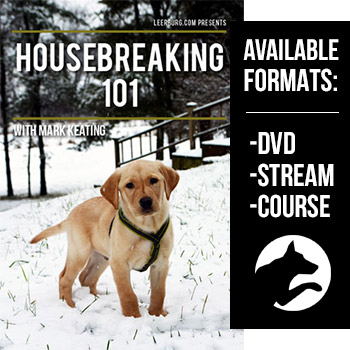
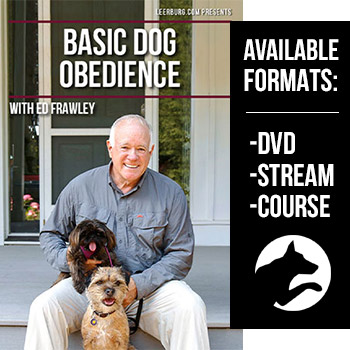

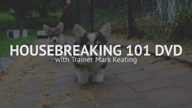
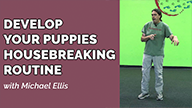

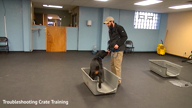
Ask Cindy.